

Pankration Gallery
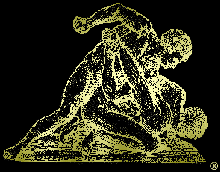 | Greek bronze statue (400-300 B.C.) The "heaver" (pile driver) |
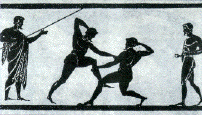 | The painting is another epresentation of ano-pankration with the contestant on the left launching blows with fists and feet. The opponent is shown backing off and preparing to counter. The referee stands ready to enforce the rules. |
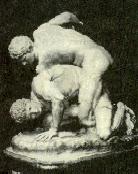 | Armlock from the rear. Painting of Spartan warrior |
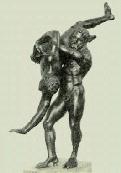 | Greek statue ( 400-300 B.C.) Maneuvering to the top control position. |
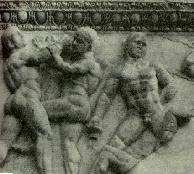 | Roman wall sculpture (0-200 A.D.) Arm trap with knee stike to the groin. |
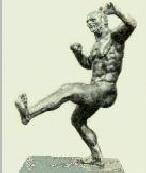 | Roman bronze statue (0-200 A.D.) Low front kick. |
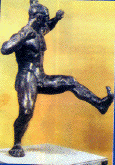 | Low kicks are a rigid rule in both the ancient and cotemporary forms of Hellenic pancration. The statue, the ststue dipicts a powerful low front kick aimed at the knee. |
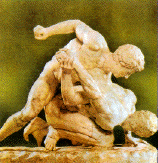 | This statue is a classic exampleof kato-pankration (Greek:ground combat) The top mounted pankratiast applies an arm lock on his downed foe while preparing to reign an onslaught of punches to the head. |
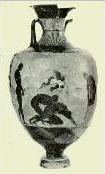 | Greek vase (525-510 B.C.) waist lock in preparation for suplex. |
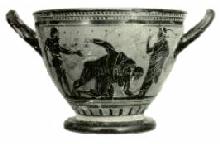 | Greek vase (500 B.C.) Headlock applied during ground combat. |
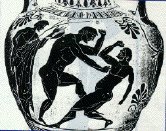 | Ano-pankration (Greek upright fighting) This is an example of Pug-Lak (Greek: kickboxing) with the fighter on the left delivering a simultaneous right punch to the body and low kick. |
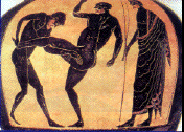 | Ano-pankration: the pancratiast on the left has seized his opponents kick and prepares to apply aubmission leg lock. |
Compliments of Jim Arvanitis Ma Tau Pankration, Boston, Mass.
Copyright © 1998 Jim Arvanitis and HEC All Rights Reserved